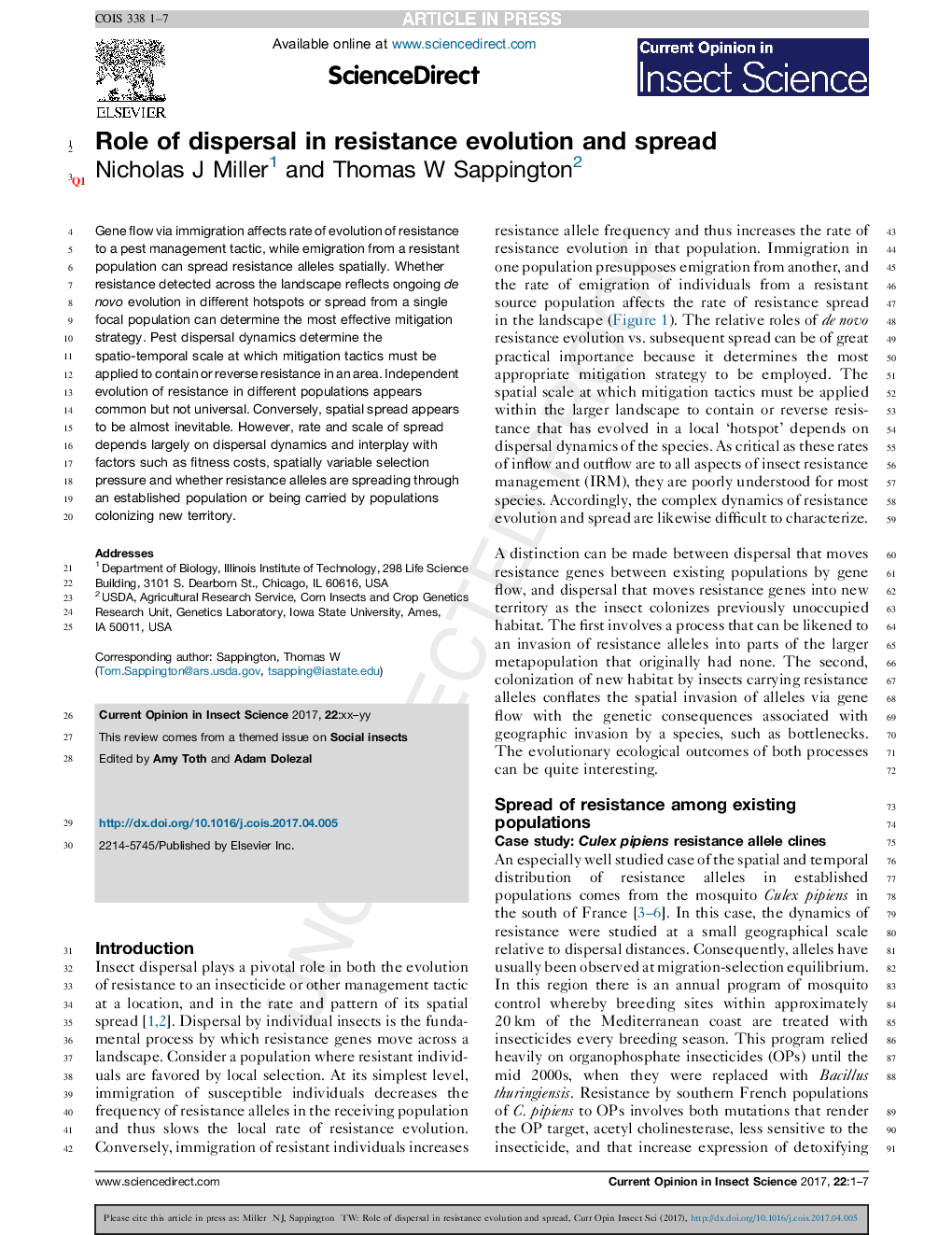| Article ID | Journal | Published Year | Pages | File Type |
|---|---|---|---|---|
| 5761127 | Current Opinion in Insect Science | 2017 | 7 Pages |
Abstract
Gene flow via immigration affects rate of evolution of resistance to a pest management tactic, while emigration from a resistant population can spread resistance alleles spatially. Whether resistance detected across the landscape reflects ongoing de novo evolution in different hotspots or spread from a single focal population can determine the most effective mitigation strategy. Pest dispersal dynamics determine the spatio-temporal scale at which mitigation tactics must be applied to contain or reverse resistance in an area. Independent evolution of resistance in different populations appears common but not universal. Conversely, spatial spread appears to be almost inevitable. However, rate and scale of spread depends largely on dispersal dynamics and interplay with factors such as fitness costs, spatially variable selection pressure and whether resistance alleles are spreading through an established population or being carried by populations colonizing new territory.
Related Topics
Life Sciences
Agricultural and Biological Sciences
Agronomy and Crop Science
Authors
Nicholas J Miller, Thomas W Sappington,
